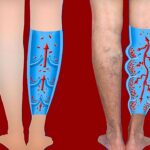Are you aware that studies have found that about 80% of all women are at risk of developing fibroids before they turn 55? For many women, fibroids are not associated with any kind of symptoms, but for others, extreme abdominal pain, irregular and excessive bleeding, increased urination, etc., can be experienced. Their symptoms can sometimes become too much to handle that they start interfering with their everyday life and require attention. Myomectomy is one way to get rid of these symptoms and fibroids. Although this procedure is very helpful with symptoms, very few women know that it cannot remove all the fibroids, and the chances of it occurring again are 11% yearly. Let’s talk about common yet less known complications and body changes resulting from this surgery.
Body Changes After Myomectomy
One of the most significant changes after a myomectomy is the relief from the symptoms that a fibroid causes. Pressure, discomfort, and pain in the pelvis caused by the presence of uterine fibroids often diminish after the surgery. Women who experience heavy and irregular menstrual bleeding as a symptom of uterine fibroid may notice a decrease in blood flow, making the menstrual cycle more normal and manageable.
Improved fertility
Women who chose myomectomy to preserve their chances of getting pregnant may experience improved chances of conception. Fibroids can interfere with the embryo’s implantation and disrupt the flow of blood toward the Uterus; myomectomy can help to enhance fertility by removing the fibroid and its impacts on implantation. This increases the likelihood of getting pregnant.
Structural changes in Uterus
Fibroid removal can potentially alter the structure of the Uterus. It majorly depends on the size and location of the fibroid. These changes are generally well-tolerated but may have implications for future childbirth or pregnancy. In some women who undergo myomectomy, doctors recommend a cesarean section (C-section) delivery.
Adhesions
Myomectomy, like any other surgical procedure, may result in scarring. However, the extent of scarring depends on the type of surgical approach. The formation of adhesions follows scarring. Adhesions are bands of scar tissue capable of sticking the organs together. The major concern here is that adhesions can impact fertility and cause pelvic pain.
Physical Recovery
The recovery time of this procedure depends on the type of surgery and the patient’s overall health. Fatigue, discomfort, pain, etc., are common in the initial weeks after the procedure. Physical activity may be restricted during recovery, and the patient is usually advised to avoid heavy lifting.
Emotional well-being
Myomectomy can impact the patient emotionally. A range of emotions is common among women. They may feel relief, anxiety, sadness, etc. Support from family, friends, and professionals is crucial during such a time. Despite all the changes myomectomy can ring to your body, an individual must maintain open communication with their healthcare providers about any bodily changes to better predict the situation.




